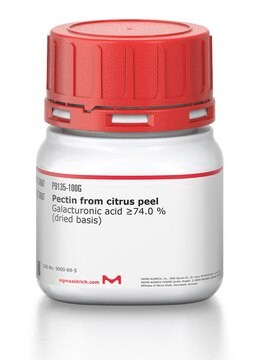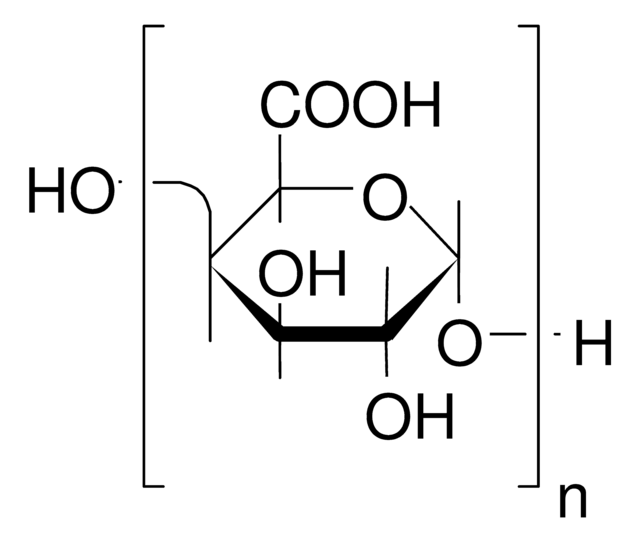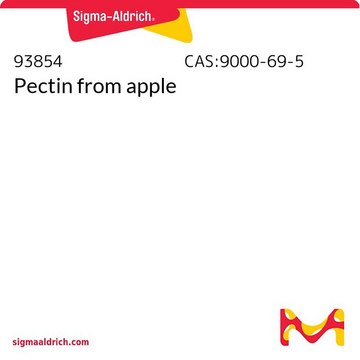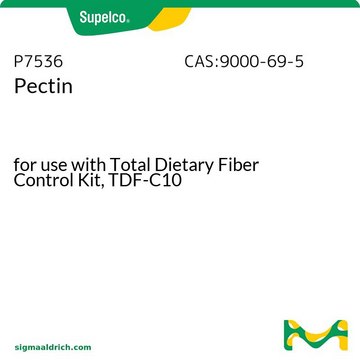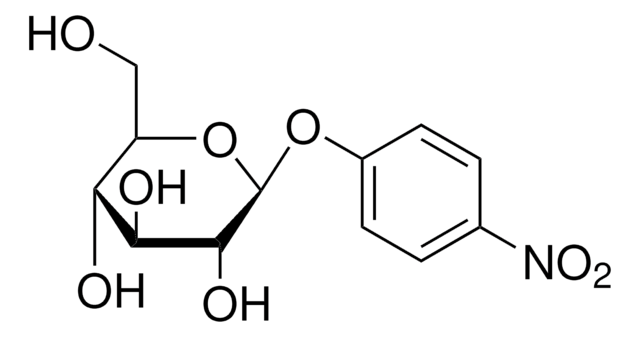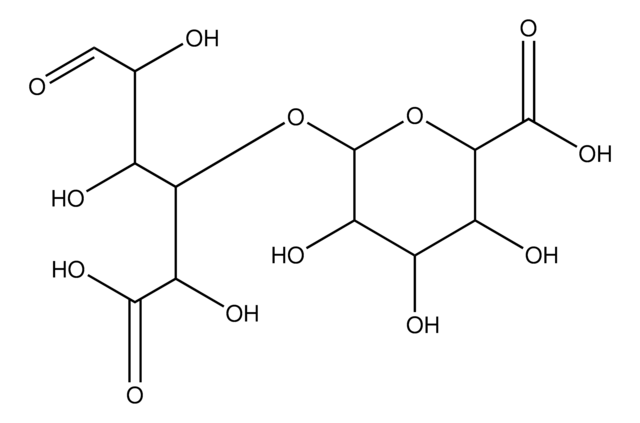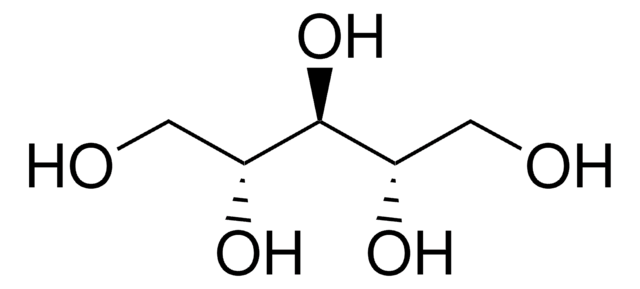P3850
Polygalacturonic acid sodium salt
from citrus fruit, ≥75% (titration)
Synonym(s):
Polyanhydrogalacturonic acid, Sodium polypectate
Sign Into View Organizational & Contract Pricing
All Photos(4)
About This Item
Recommended Products
biological source
citrus fruit
Quality Level
Assay
≥75% (titration)
form
powder
color
white to light brown
solubility
water: 10 mg/mL, hazy to turbid, faintly yellow to yellow
cation traces
Na: 6.5-10.5% (ICP)
storage temp.
room temp
Looking for similar products? Visit Product Comparison Guide
General description
Sodium polypectate sequesters metal ions and, in fungal cultures, it is used as a carbon source and inducer of polygalacturonases.
Application
Sodium polypectate can be used to sequester metal ions. In fungal cultures, it is used as a carbon source and inducer of polygalacturonases.Polygalacturonic acid has been used in a study to assess an alkaline-active and alkali-stable pectate lyase from Streptomyces sp. S27 with potential in the textile industry. It has also been used in a study that investigated optimization of production and reaction conditions of polygalacturonase from Byssochlamys fulva.
Biochem/physiol Actions
In land plants, polygalacturonic acids are major components of cell wall polysaccharides (pectins). Bound polygalacturonase-inhibiting peptides (PGIP) protect pectin from degradation by fungal polygalacturonases.
Other Notes
To gain a comprehensive understanding of our extensive range of Polysaccharides for your research, we encourage you to visit our Carbohydrates Category page.
Storage Class Code
11 - Combustible Solids
WGK
WGK 3
Flash Point(F)
Not applicable
Flash Point(C)
Not applicable
Personal Protective Equipment
dust mask type N95 (US), Eyeshields, Gloves
Choose from one of the most recent versions:
Already Own This Product?
Find documentation for the products that you have recently purchased in the Document Library.
Customers Also Viewed
Optimization of production and reaction conditions of polygalacturonase from Byssochlamys fulva
Gupta, R. and K. Acta
Microbiology and Immunology, 58, 339-349 (2011)
Ana Paula de F C Vanzela et al.
Microbiological research, 157(3), 239-247 (2002-10-26)
The effects of glucose and of a pectic substrate in the duplication cycle, spore polarization and septation of Aspergillus nidulans were tested in poor and rich media. Growth on poor conditions and on sodium polypectate slowed nuclear duplication and reduced
M D Huertas-González et al.
Current genetics, 35(1), 36-40 (1999-02-18)
A pectate lyase (PL1) from the tomato vascular wilt pathogen Fusarium oxysporum f.sp. lycopersici was previously characterized, and evidence was obtained for its production in planta. The gene encoding PL1 was isolated from a genomic library of F. oxysporum f.
Johanna Nykyri et al.
PloS one, 8(9), e73718-e73718 (2013-09-17)
In this study, we characterized a putative Flp/Tad pilus-encoding gene cluster, and we examined its regulation at the transcriptional level and its role in the virulence of potato pathogenic enterobacteria of the genus Pectobacterium. The Flp/Tad pilus-encoding gene clusters in
M A Chellegatti et al.
Journal of basic microbiology, 40(5-6), 319-326 (2001-02-24)
Penicillium frequentans synthesized eleven polygalacturonases and three pectinesterases when grown in the presence of pectin, sodium polypectate or monogalacturonic acid. When glucose was the sole carbohydrate source in the medium two of these polygalacturonases and one pectinesterase were produced. The
Our team of scientists has experience in all areas of research including Life Science, Material Science, Chemical Synthesis, Chromatography, Analytical and many others.
Contact Technical Service